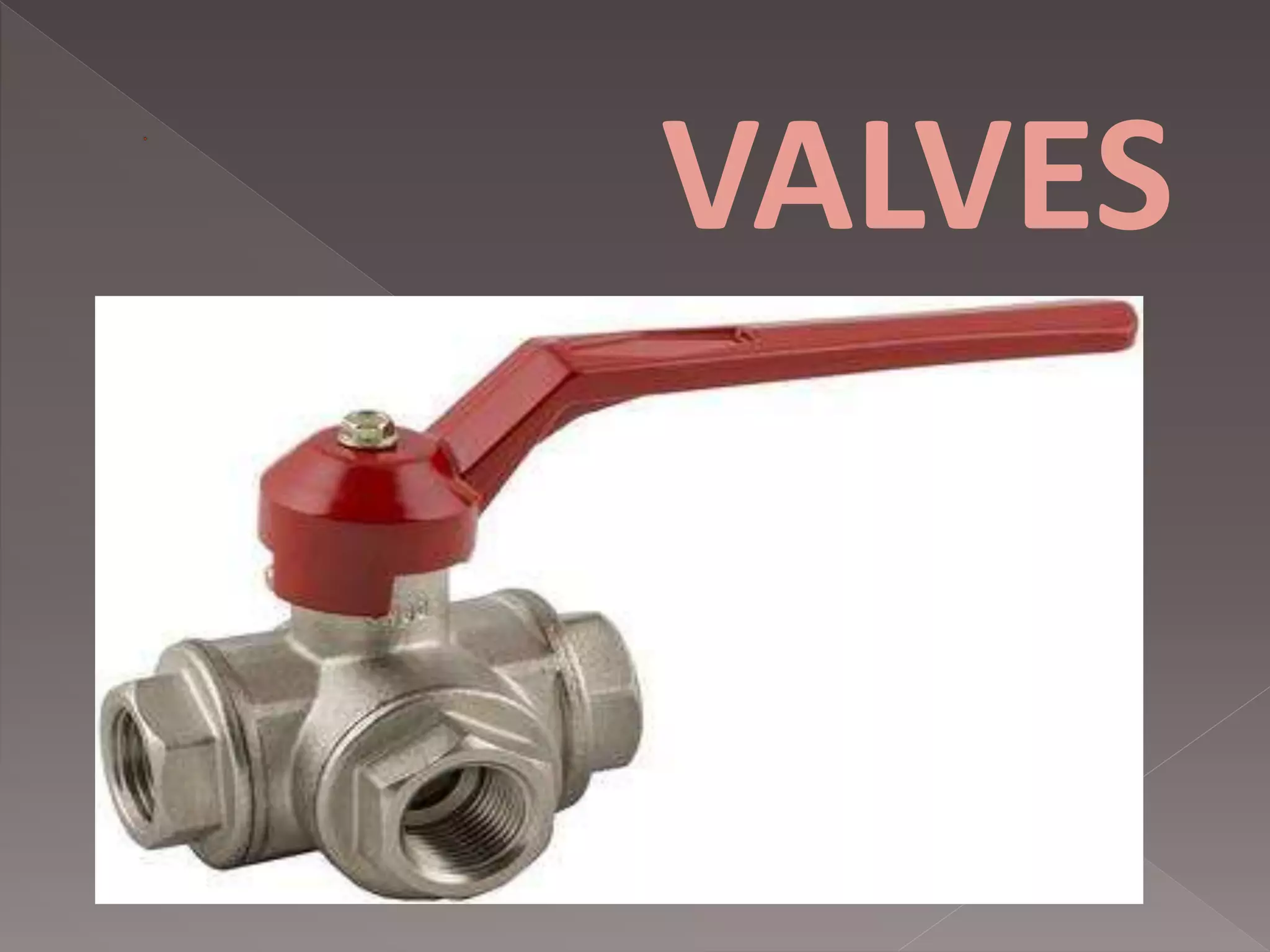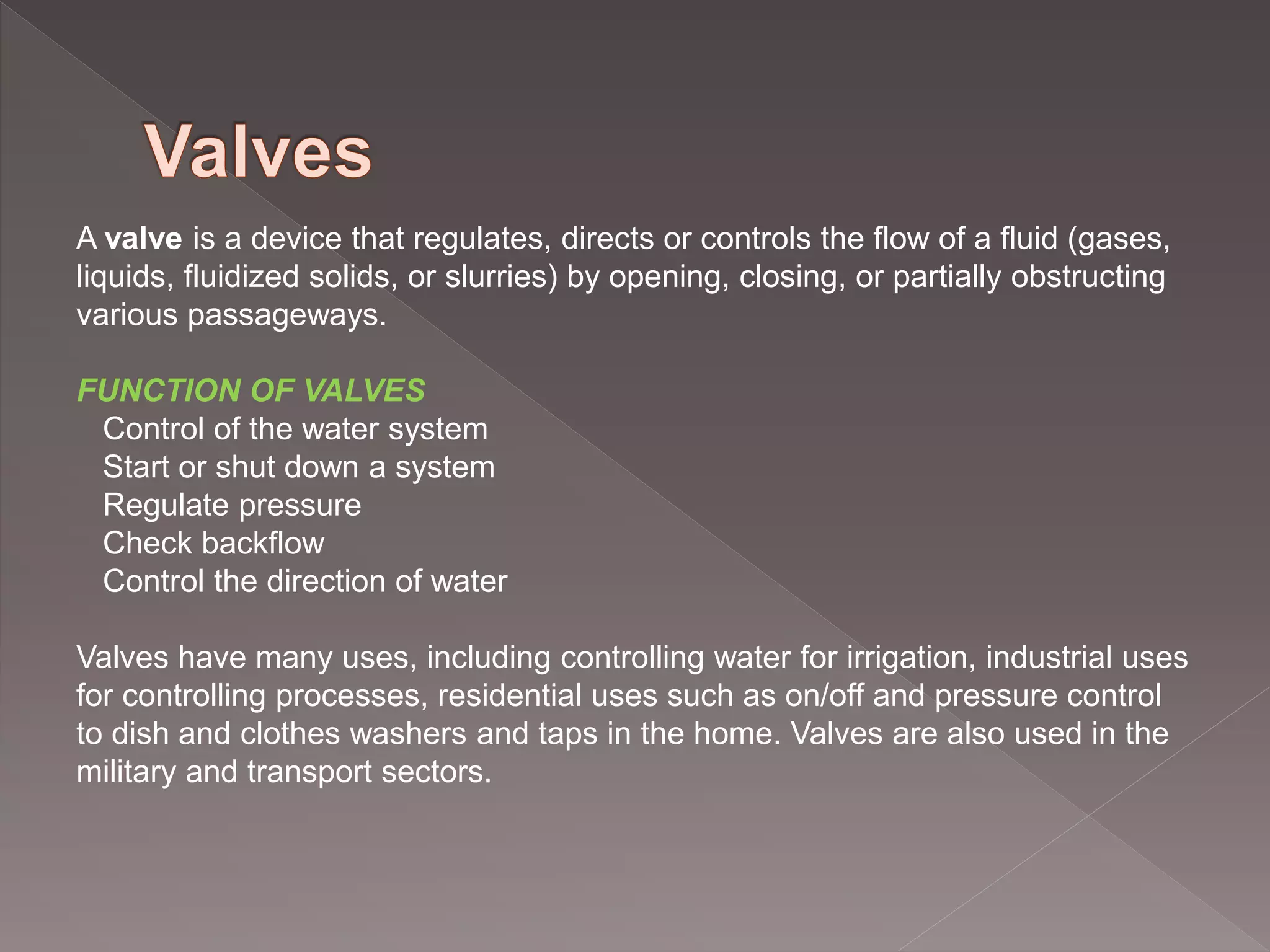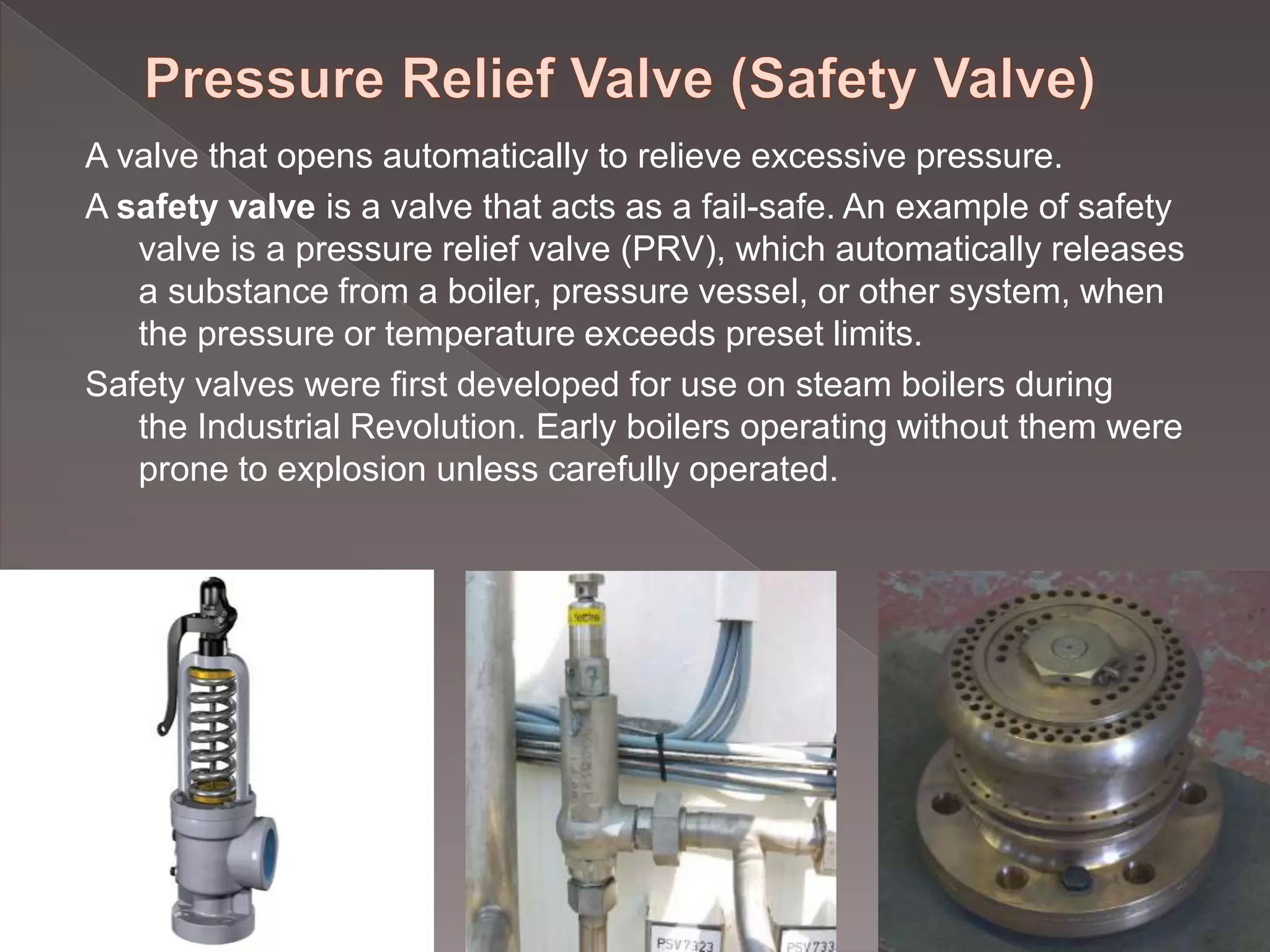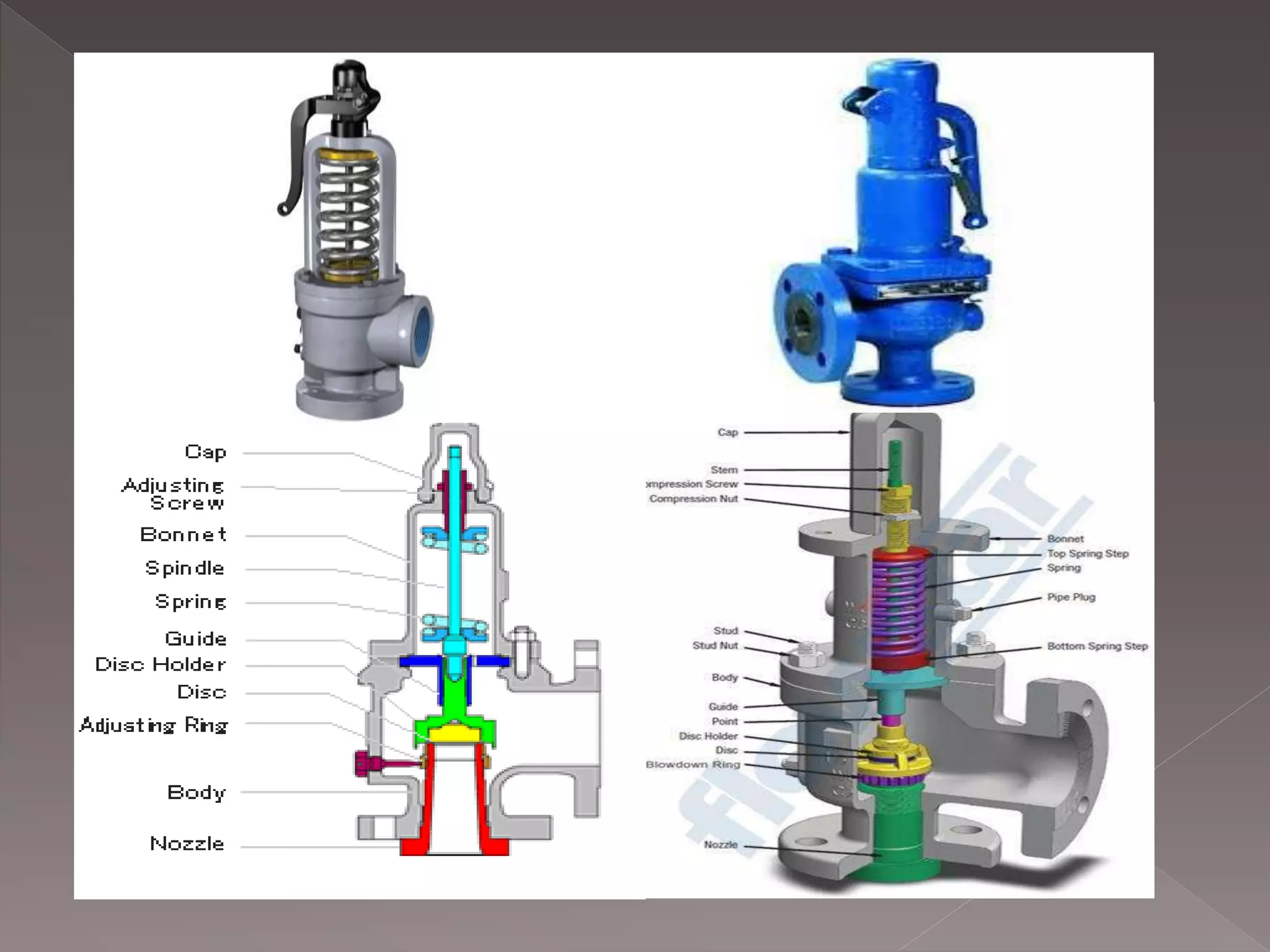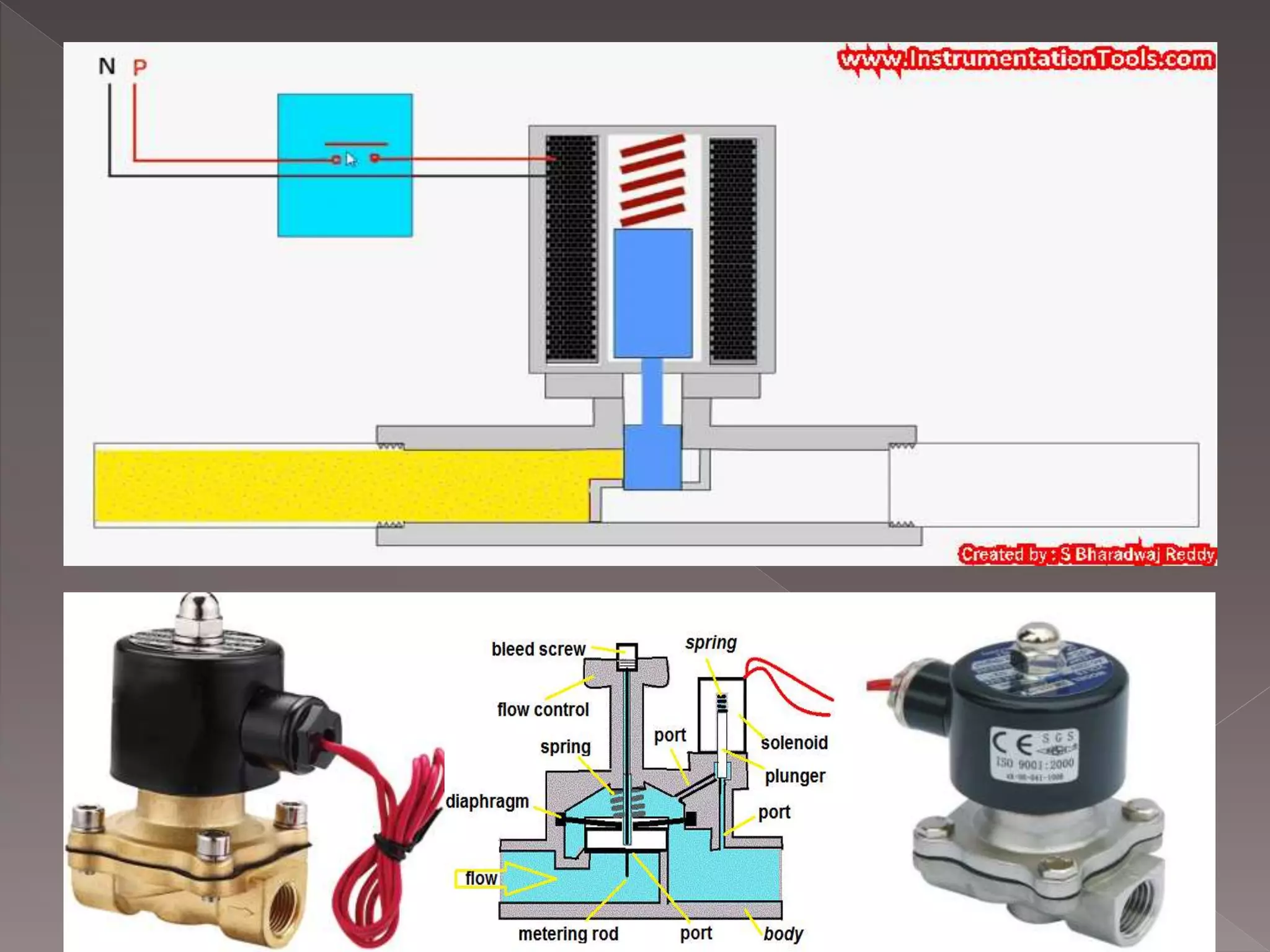A solenoid valve is an electromechanically operated valve that is controlled by an electric current passing through a solenoid. When current is applied, the solenoid generates a magnetic field that either opens or closes the valve. Solenoid valves are commonly used to control fluid systems and have applications in plumbing, industrial machinery, pneumatic tools, and more due to their fast, reliable switching capabilities.
